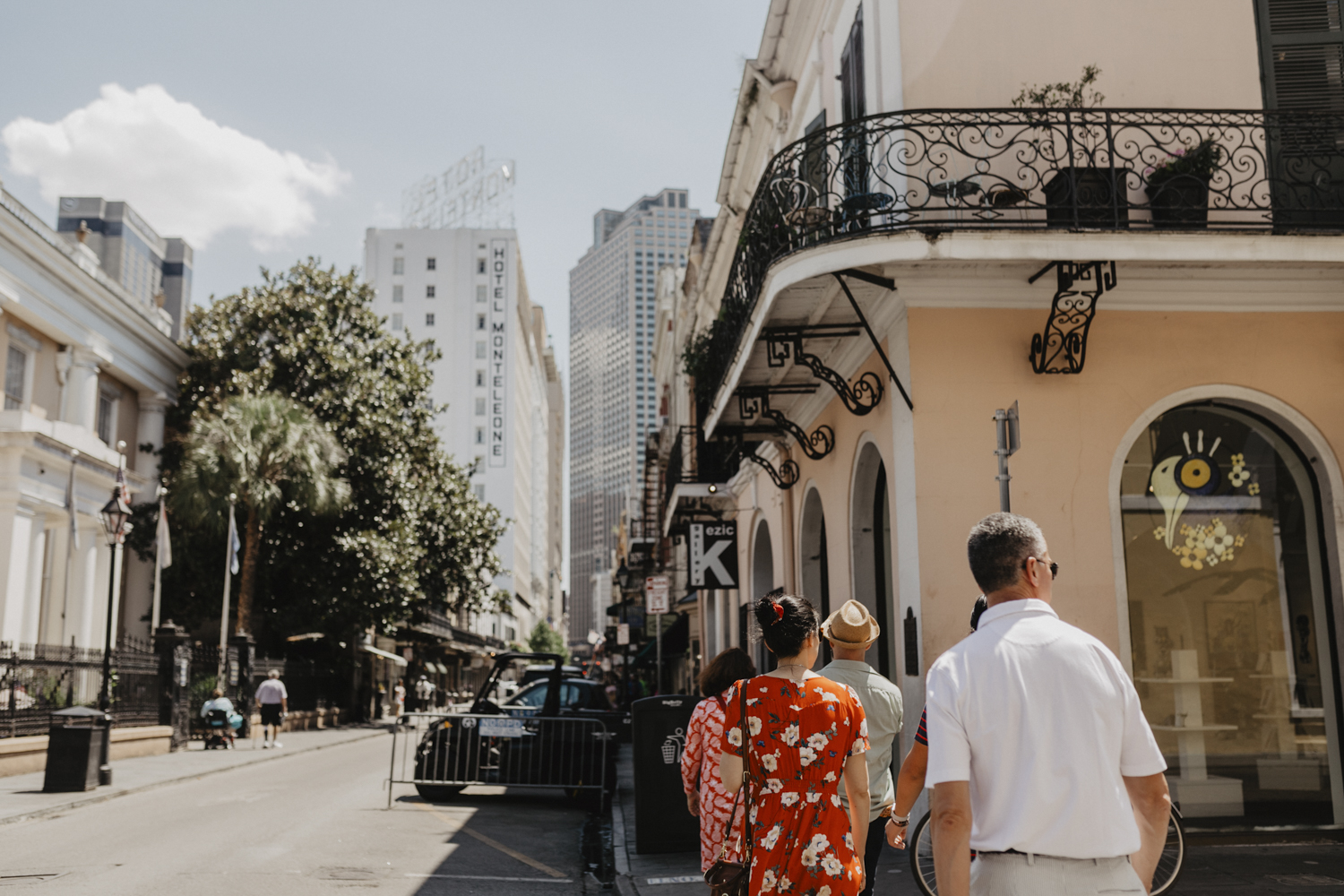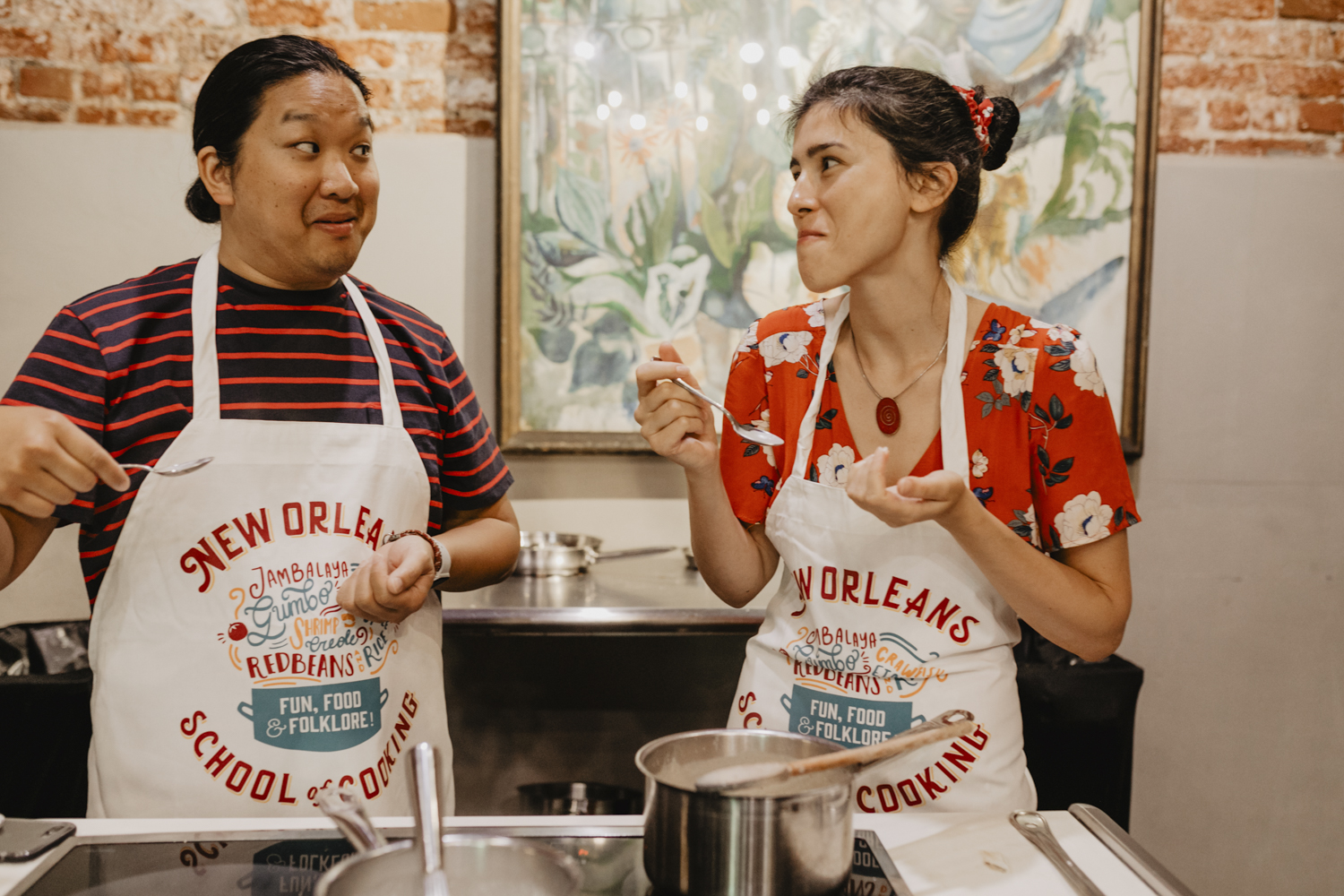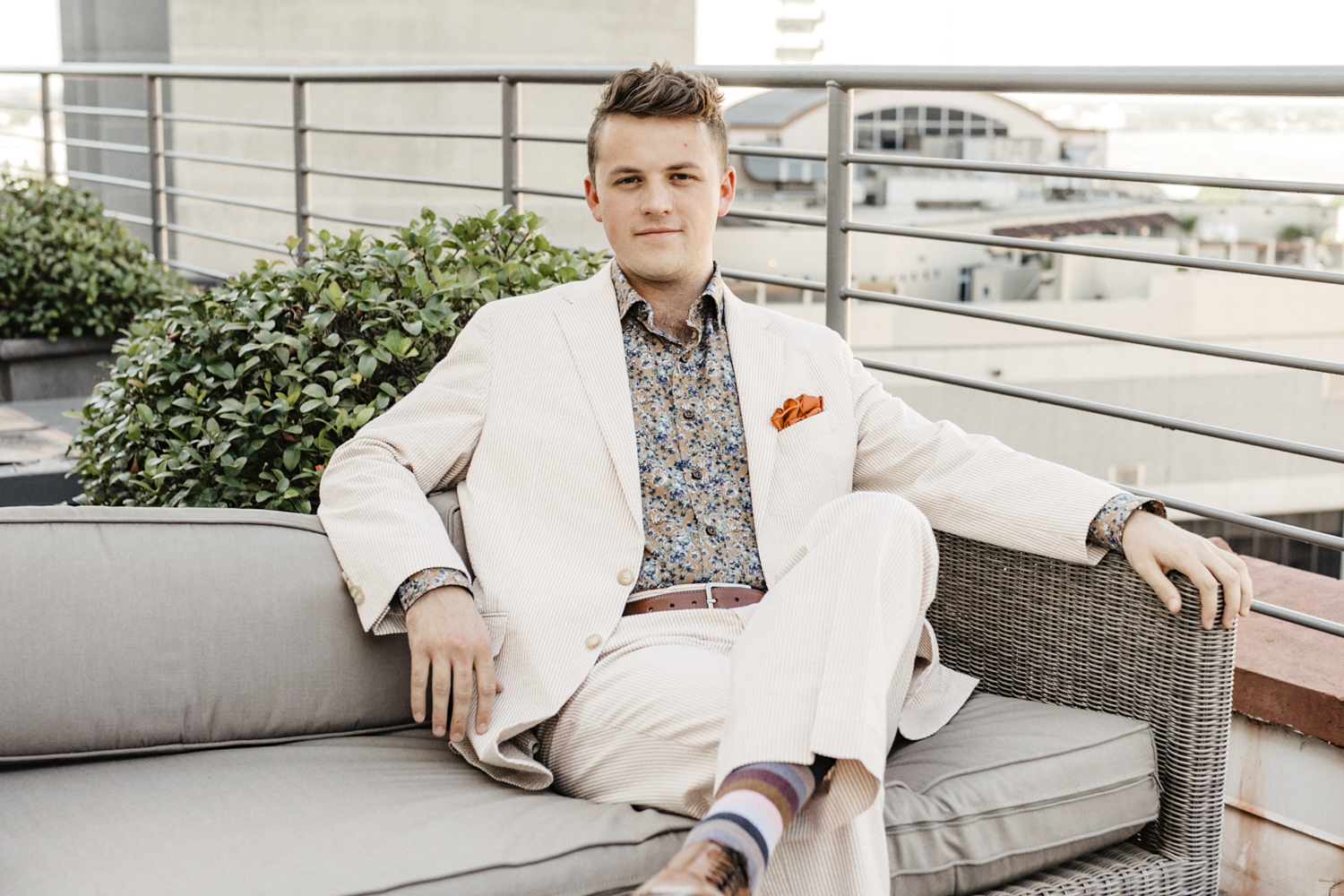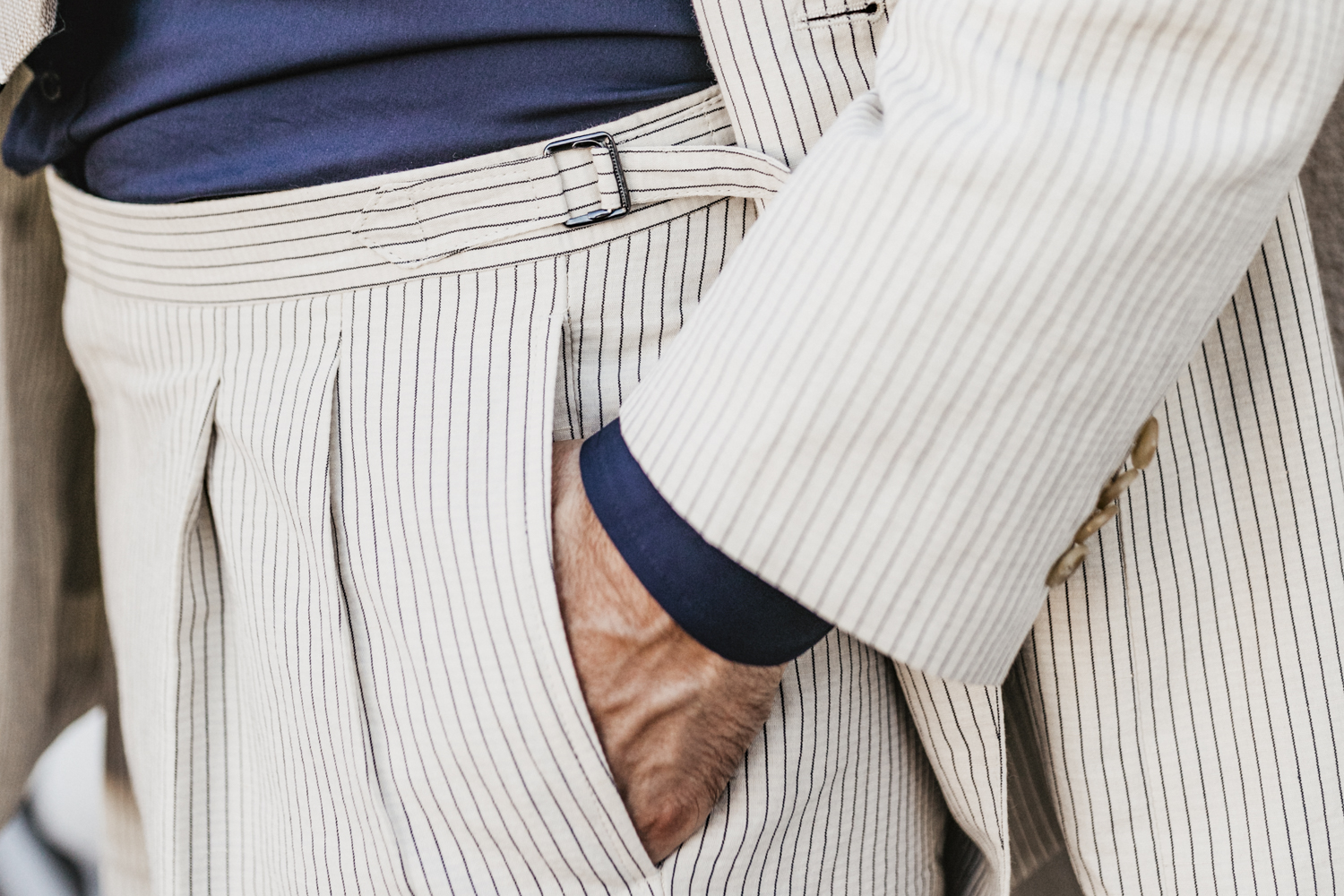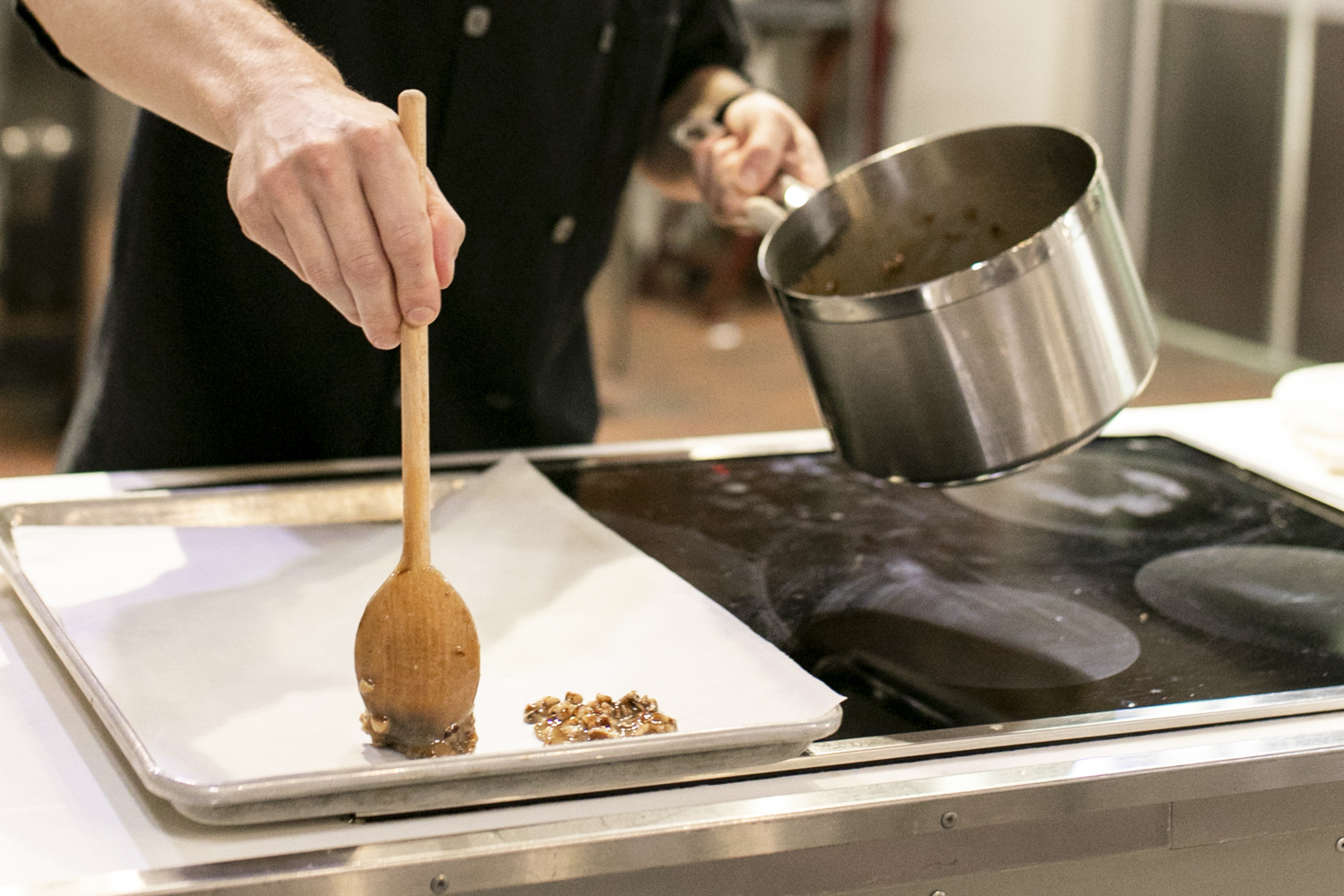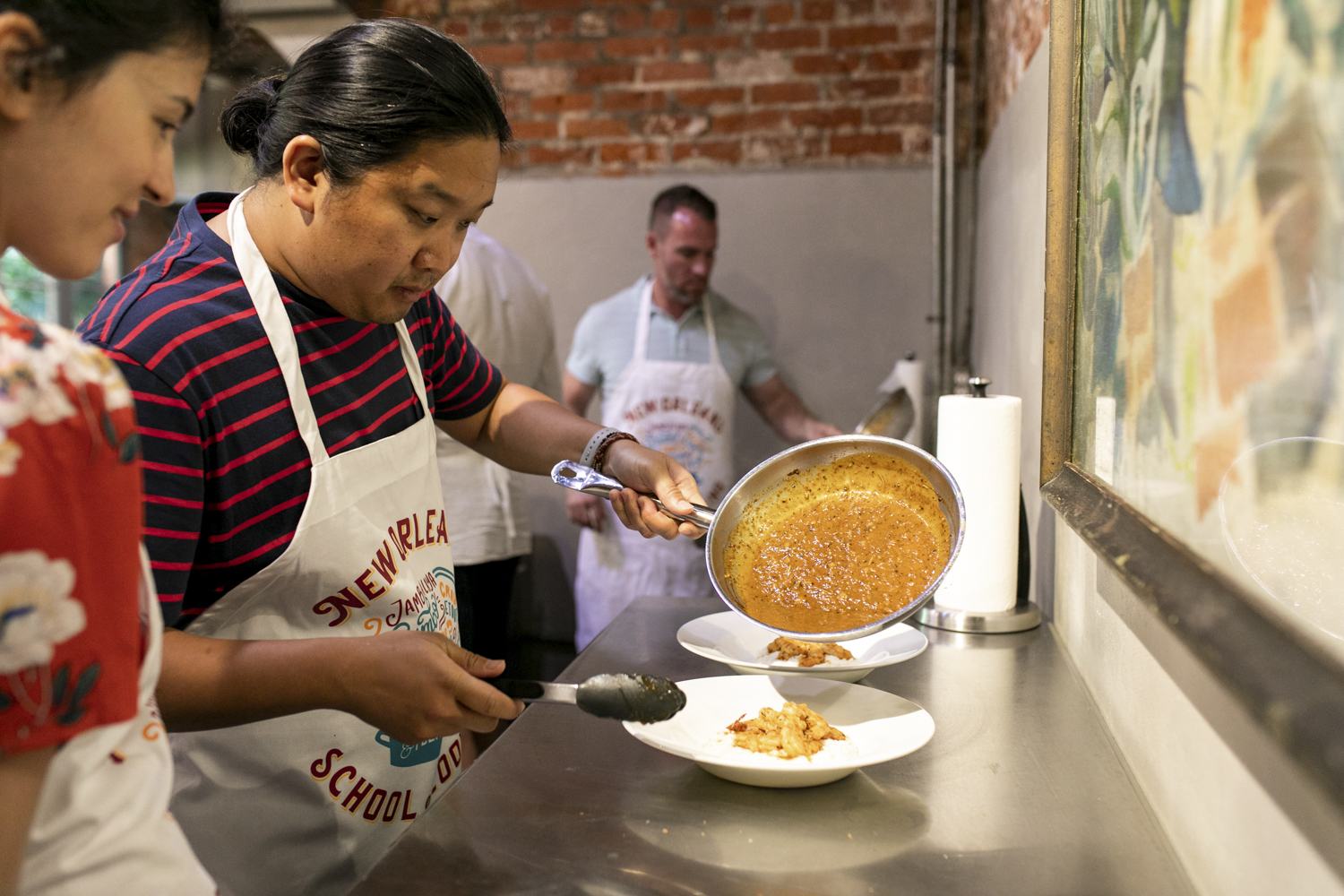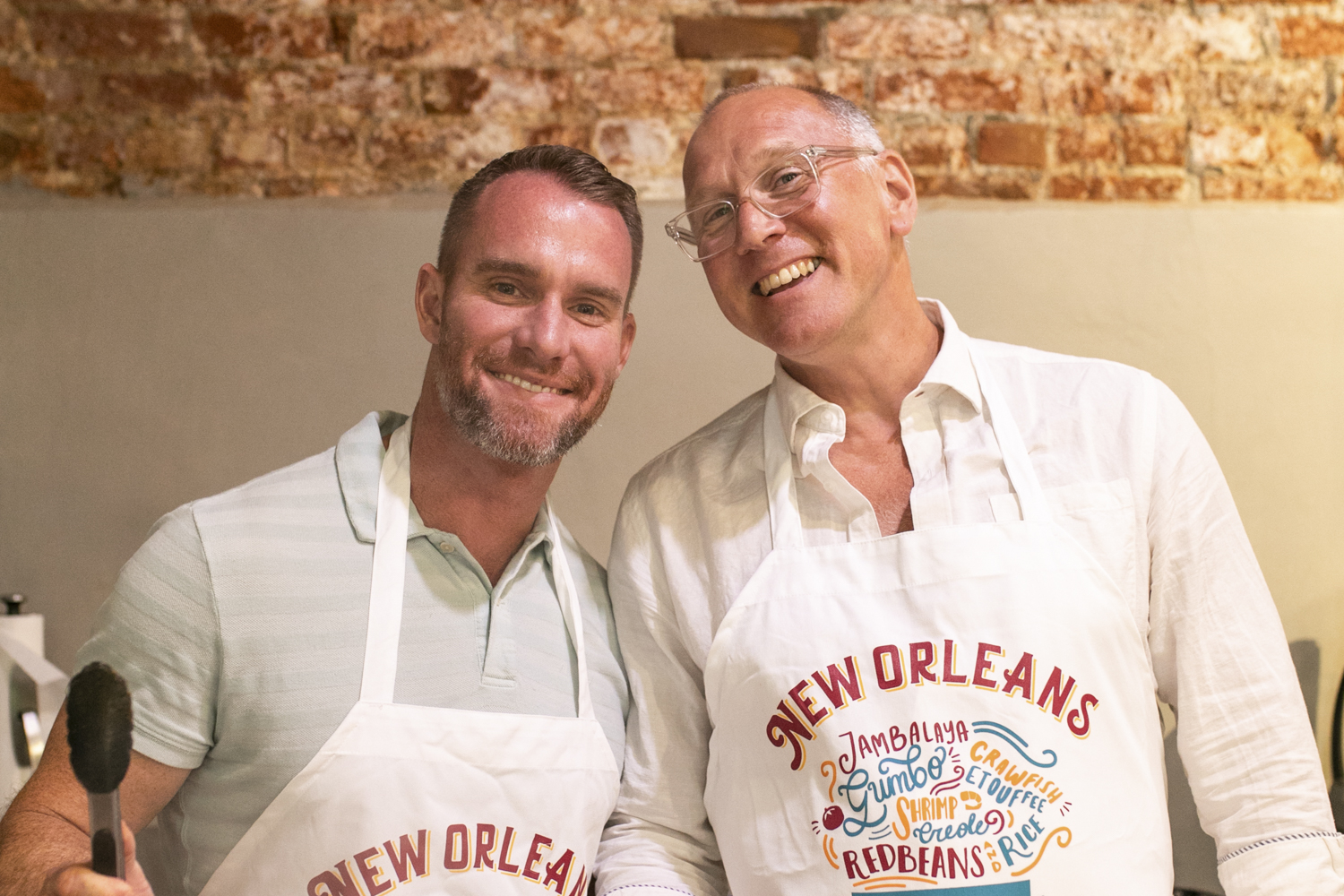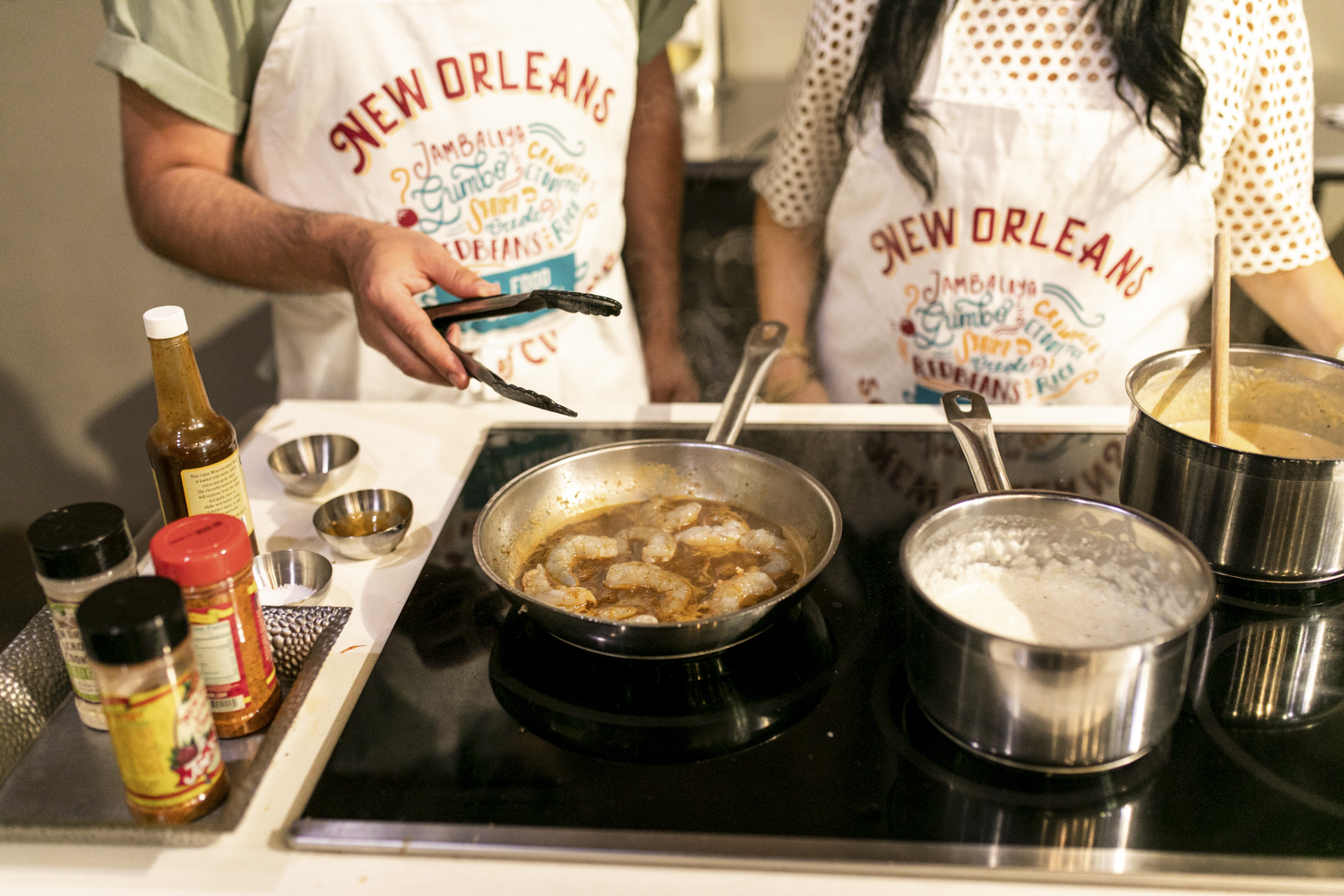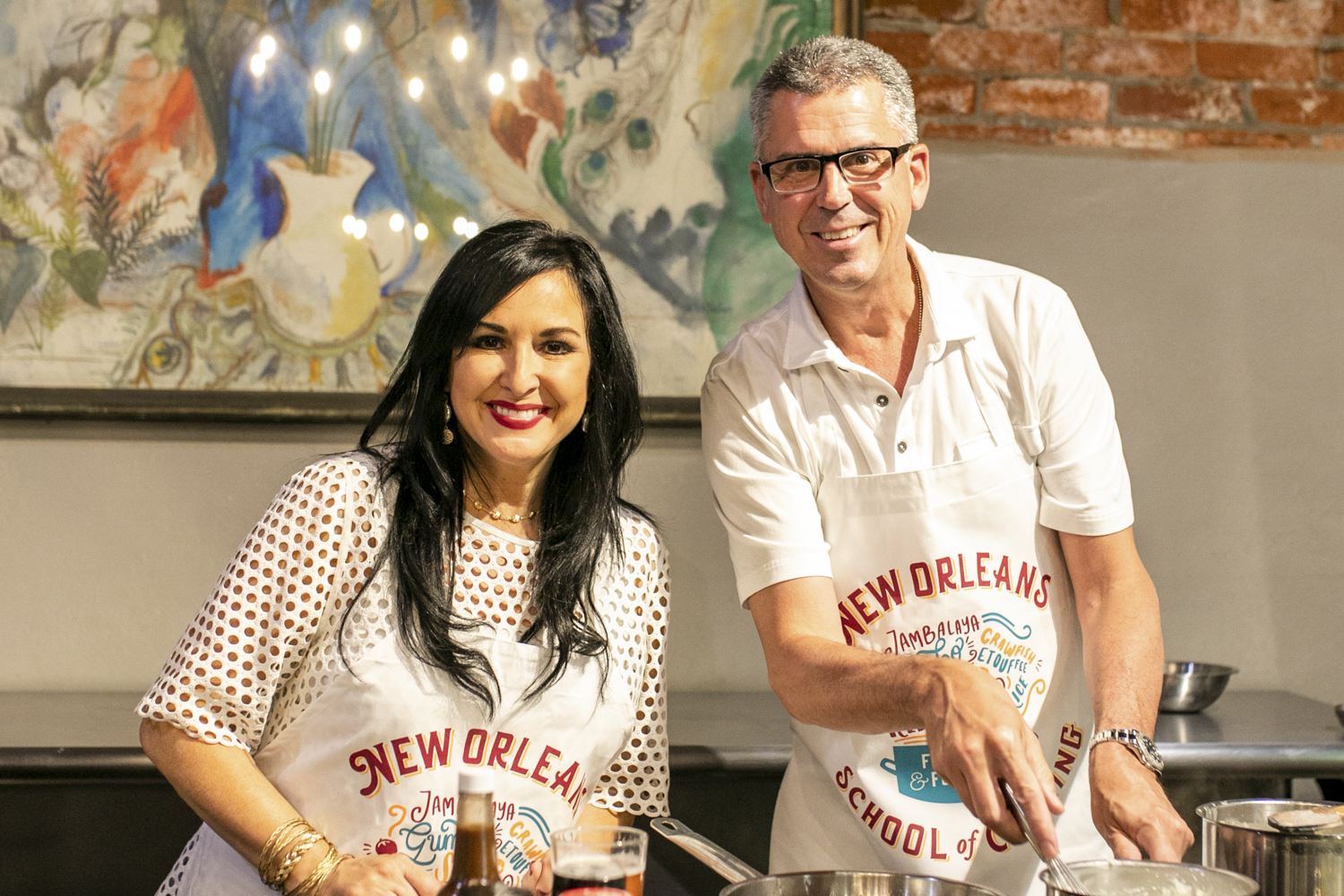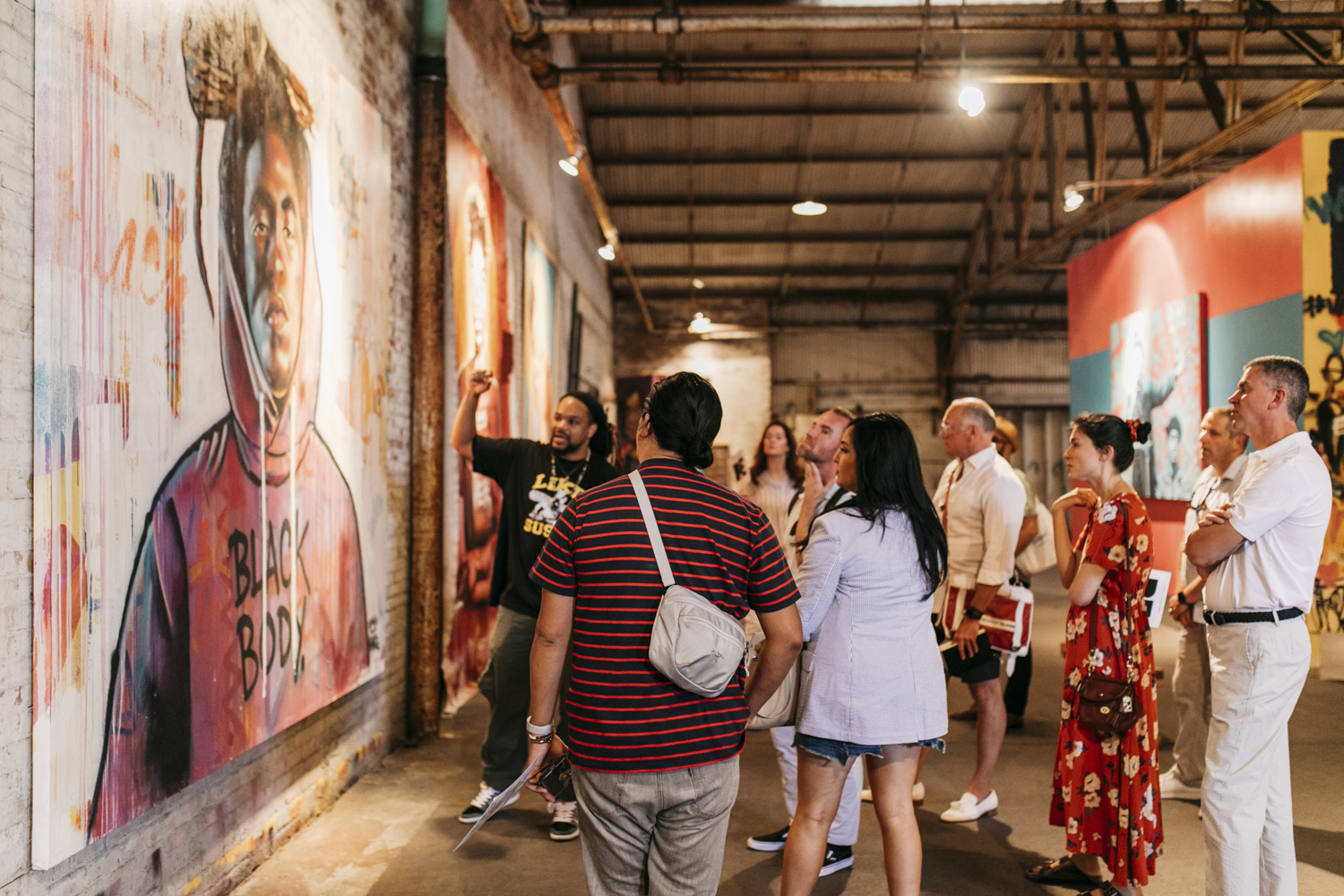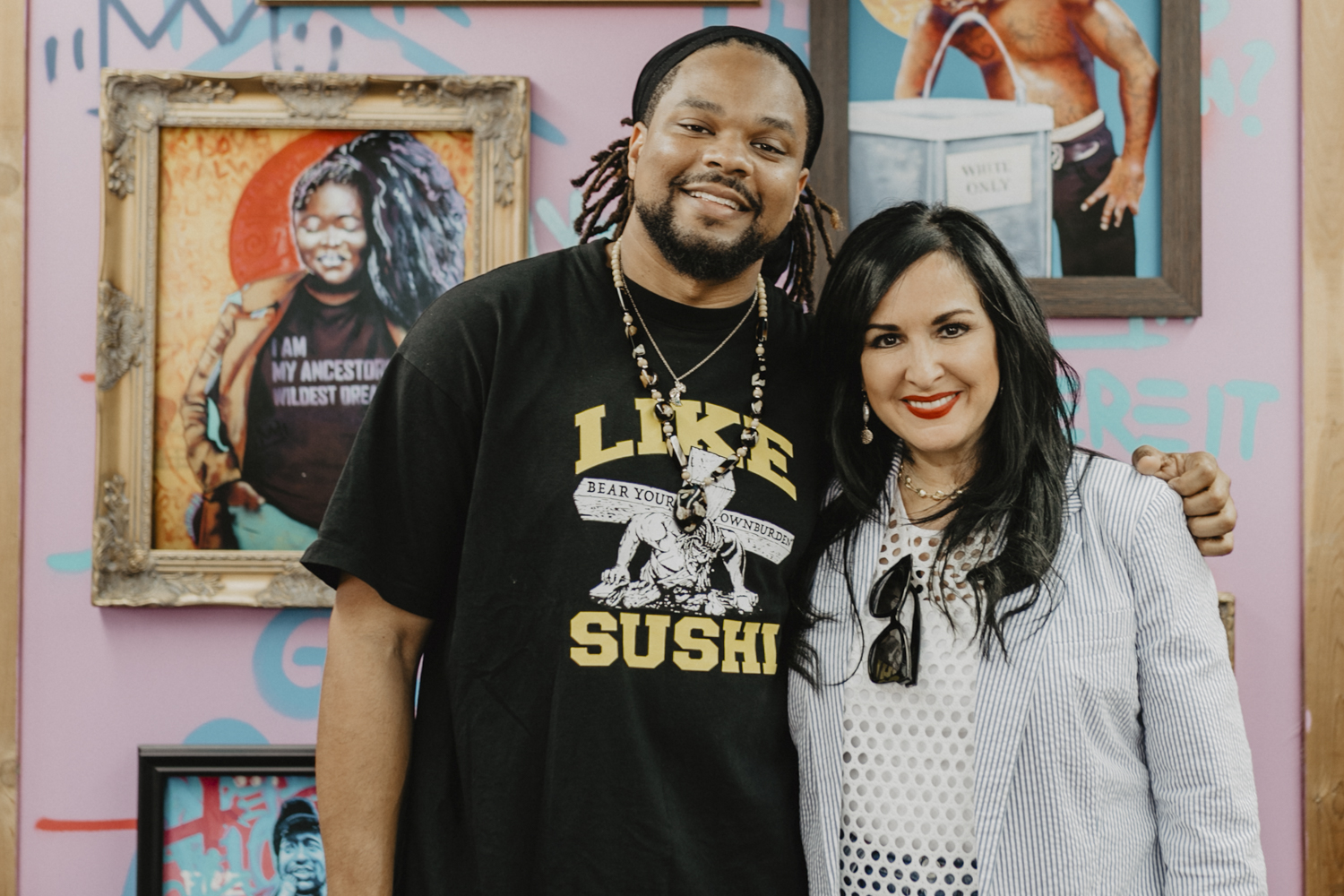On Tom Waits’ classic Nighthawks at The Diner, during the closing track Waits agrees that he needs to step up his style, saying, “Maybe a serious seersucker Saturday evening cranberry accouterment ensemble would be nice.”
Wouldn’t it, though? The line kept snaking through my head when I was invited by Haspel, the champion of seersucker, to head South and experience the city of New Orleans — and the birthplace of the classic seersucker suit — to celebrate National Seersucker Day. Haspel was founded in New Orleans in 1909, so this was a not-to-be-passed-up opportunity to celebrate the brand’s 110th anniversary, while taking a deep drink of the culture that formed this sartorial icon.
According to fashion historian Bill Haltom, author of Milk and Sugar: The Complete Book of Seersucker, the history of seersucker fabric gets muddled in time. The name itself is said to come from the Persian; a derivation of “sheer” and “shakkar,” meaning milk and sugar, describing the way the smooth and bumpy textures of the fabric come out in the weave. It was brought to the United States from the British Colonial East Indies in the 1800s. That puckered texture causes the already lightweight fabric to lift away from the skin, keeping the wearer cool. Joseph Haspel, a clothier and tailor, adopted the fabric to make work clothes for factory workers and farmers — even prisoners — who work in New Orleans’ near-tropical climate. He was inspired to tailor the fabric into a suit for professionals to battle Louisiana’s raging heat, and it became a sensation throughout the South.
Ever one to recognize a great story opportunity, Haspel, while attending a trade show in Boca Raton, Florida, took a dive into the Atlantic … while wearing his own seersucker suit! His point was that the suit would be dry in no time, ready to wear again, without cleaning or pressing. True to his word, it was; and he wore the suit to the trade show dinner that very evening.
Haspel’s creativity, sense of innovation, and excellent taste all grew from the melting pot of cultures that make up New Orleans. His granddaughter, Laurie Haspel Aronson, keeps up the family tradition. Aronson is the company’s current President and CEO, but for a few days she also was our hostess, tour guide,ds and CFO (Chief Fun Officer).
Now, I’d never been to the legendary city, but this was to be quite an introduction. We stayed at the International House, a delightful boutique hotel with a sparkling, slightly louche style, just outside the French Quarter. The cozy, Beaux Arts lodging features a painting by anonymous artist Banksy called The Looters that hotelier Sean Cummings rescued and restored — plaster and all — to hold court in the building’s lobby. Dinner followed at the elegant Justine, a modern brasserie in the French Quarter, specializing in the classics: Onion soup, steak tartare, oysters, duck confit, and moules frites. Later we headed to jazz bistro Snug Harbor, where we were treated to the stylings of the Uptown Jazz Orchestra, featuring classics by the likes of Duke Ellington and Louis Armstrong.
The next morning we toured the groundbreaking Studio BE, the exhibition and work space of artist and activist Brandan Odums. Odums is a muralist more than he is a graffiti artist, although you could be forgiven for thinking that given that his preferred medium is spray paint. His work celebrates, honors, and reveals contemporary black culture, as well as its roots. His work grows from his desire to draw attention to the plight of the area’s African American community following the devastation of Hurricane Katrina in 2005, many of whom were driven from homes that were never replaced in the ongoing recovery.
On a lighter note we headed to the New Orleans School of Cooking to be schooled in preparation of Cajun cuisine by making our own lunch of corn and crab bisque, shrimp and grits, and bread pudding by Chef Matt Guillory. Guillory carefully explained the history and differences between Cajun and Creole food all while keeping a group of eight people cooking like pros.
Lunch was followed by a tour of a few local landmark drinking establishments where author, podcaster, and historian Elizabeth Pierce walked us through the complicated history of the city’s freewheeling cocktail culture (New Orleans is one of only a few U.S. cities where you are permitted to walk around the streets with a cocktail in hand). She also explained the complicated history behind the city’s official cocktail, the Sazerac, as well as that of the Ramos Gin Fizz.
Let’s pause here to point out that this was so much more than a tour. If you haven’t been to New Orleans, I do hope that this piece tempts you to go to that wonderful place for a visit, but what I really want to show here is the constant mix of the old and the new, the high and the low, the fun and the serious that, like the seersucker fabric itself, informs the Haspel collection. That classic seersucker suit is practically the official uniform for good times, from summer weddings to the Kentucky Derby to a night out at a jazz club.

Mining the company’s archives in celebration of its anniversary, as well as the “holiday,” Will Swillie, EVP and Managing Director of Haspel, presented a vintage-styled, “tea-stained” collection at a cocktail reception that evening. The Archival Collection includes five new suit styles and five coordinating woven sport shirts. (This editor’s favorite, a double-breasted, side-vented jacket with a modern pleated pant and side tab waistband, looks like it stepped right out of a vintage Hollywood film.) Suits will retail for $695 and shirts for $125, exclusively online at Haspel.
We finished our Haspel experience with a formal dinner at the classic New Orleans’ R’Evolution Restaurant (special thanks to the team at the celebrated store Rubenstein Bros., who fitted us all in Haspel suits so we could be suitably dressed for the occasion). We then hit the town for a few cocktails and a walk down historic Bourbon Street, with a frozen daiquiri in hand, of course.

